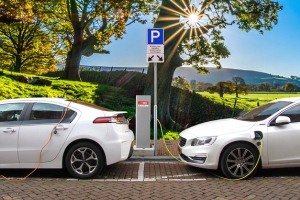Report breaks down $172.3bn autonomous vehicle market by autonomy level, powertrain, components and tech

A report called “Autonomous Vehicle Market by Autonomy Level (Semi-autonomous [Level 1 to 4] and Fully Autonomous [Level 5], Vehicle Powertrain, Components, and Supporting Tech (5G, AI, Edge Computi;ng, Smart Buildings, and more), Globally and Regionally 2019 – 2024 ” has just been published.
It provides global and regional forecasts for the autonomous vehicle market including hardware, software, and services along with emerging technologies from 2019 to 2025. The report covers major consumer and commercial categories including personal vehicles, shared vehicles (ride sharing and shared vehicles/partial ownership. It also evaluates autonomous ResearchAndMarkets.com’s control in internal combustion engine (ICE) vehicles, electric vehicle (EV), and ICE/EV hybrids.
This report assesses the autonomous vehicle market including leading vendors, strategies, product and service offerings, and evaluates autonomous vehicles by autonomy level, powertrain type, components, and supporting technologies. It also evaluates the impact of major technologies on autonomous vehicle market such as 5G, Artificial Intelligence (AI), Mobile Edge Computing, Internet of Things (IoT), data analytics, and smart building integration.
Autonomous vehicles are poised to invoke a revolution in the automobile industry including public transportation systems, car rental and sharing systems, vehicle leasing and ownership, industrial transportation, and automotive insurance practices and systems.
The degree of autonomy in vehicles is measured levels from zero (fully human-operated) to five (fully automated system) with evolution from levels 1 through 4 consisting of an autopilot system combined with some level of human control or intervention capability. Autonomous vehicles are anticipated to become the foundation of transportation as a service globally.
Market leading autonomous vehicle use cases will be found primarily within the business realm an emphasis on shipping and commercial fleets. By way of example, Kroger is using unmanned autonomous vehicles to deliver groceries in Scottsdale, Arizona. Commercial operation of self-driving cabs (also referred to as robo taxis) is the goal of market leading human transport companies such as Uber and Lyft as autonomous vehicles will significantly reduce the cost per mile for personnel transport.
The evolution of self-driving vehicles for the fleet market will be human controlled fleets to machine/human controlled fleets to completely autonomous (e.g. machine driven) vehicles that leverage various technologies including sensors, AI, cognitive computing, geo-fencing, GIS/mapping, and more.
In terms of general consumer adoption, the publisher anticipates that end-users will not fully embrace self-driving vehicles until the 2024 timeframe. In addition to overcoming public trust factors relative to safety, the autonomous vehicle market is also focused on the major consumer upsides to self-driving vehicles, which include less expensive transport, opportunities for ride sharing and fractional ownership, and ultimately reduced outright leasing and ownership of cars, vans, and trucks.
This is anticipated to have a major impact on OEMs and traditional automakers, despite the fact that market leading automobile manufacturers are aggressively pursuing autonomous vehicle product offerings.
Paradoxically, automotive vendors are also continuously upgrading their fleets to offer more connected vehicles, which provide drivers with a substantially more safe, enjoyable, and informative driving experience. However, autonomous vehicles are also connected via IoT technologies and various broadband and narrowband wireless solutions.
In the near future, the publisher anticipates that automobile vendors will offer extended versions of connected vehicle apps to human occupants within autonomous vehicles that capitalised on hands-free operation and even fully immersive experiences for longer trips.
The automotive ecosystem is also faced with disruption from electric vehicles (EV), which has transformed supply chain economics at the vehicle component level as well as consumer value perception and lifecycle management. Improvements in battery cost/performance and reduction in cost of powertrain components for EV will lead to lower overall purchase cost that is more comparable with traditional internal combustion engine (ICE) vehicles.
The autonomous vehicle ecosystem will also be highly disruptive with respect to the consumer segment regarding the traditional production and sales cycle. This will be due largely to the vast amount of data produced by self-driving cars, vans, and trucks.
The use of AI and big data analytics will allow both real-time decision making as well as post event analytics. Information gathered will be used for fine-tuning vehicle operations as well as mass customisation within the automotive industry. This will serve to hasten dramatic transformation with the automobile industry regarding fractional ownership, ride sharing, and the vehicle as a service economy.
Comment on this article below or via Twitter @IoTGN
